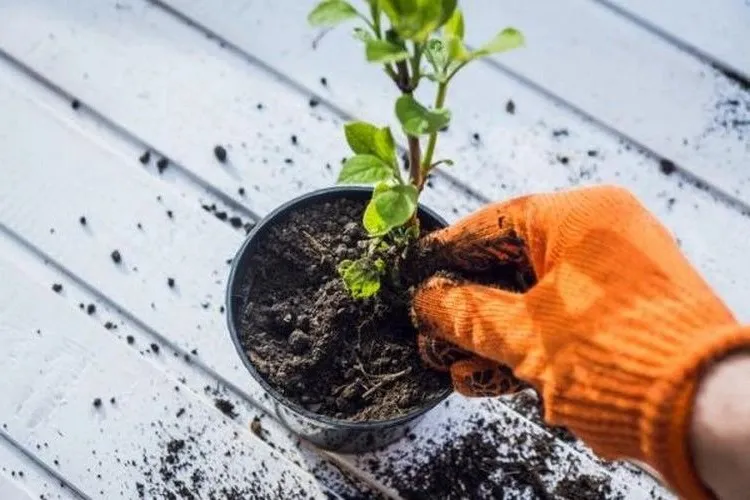A home full of beautiful houseplants is a wonderful thing until a fly infestation occurs. Luckily for you, there are effective ways to get rid of these annoying and unwanted guests. Here are some home remedies for flies in potting soil that will serve you well!
Fungus gnats are very small, black flies that you have surely seen around your houseplants. They can attack all types of plants. However, they are particularly attracted to those planted in pots because they lay their eggs in the moist soil so that the hatched larvae can feed on the fungi in the potting soil. They are not harmful to humans, but can damage the roots of young plants, so it is best to control the infestation. Find out here which home remedies are very effective against flies in potting soil now!
Which Home Remedies for Flies in Potting Soil – Cinnamon!
Cinnamon acts as a natural fungicide, effectively killing the fungal spores in the potting soil that fungus gnats feed on. This makes the soil uninhabitable for these flies. Using this method is extremely easy. All you need to do is sprinkle cinnamon into the top layer of the potting soil in the pot. This simple remedy kills both the adult flies and the larvae.
Cover the Soil with Sand
@_m.a.d.s.__ More fungus gnat hacks in the comments!! #fungusgnattrap #fungusgnats #plantyok #plantcare101 #plantcaretaker #plantcaretips #plantpestcontrol #planty ♬ Strawberry – Prod. By Rose
In addition to moisture, fungus gnats are attracted to decaying components in plant soil, such as peat moss and compost. However, if you cover the soil of potted plants with sand, you dry out the soil and create a barrier between the flies and the houseplant soil. In this way, the environment becomes unattractive to the flies and the likelihood of fly infestation is significantly reduced. We also advise you to avoid waterlogging and to remember to always only use soil that is specifically suitable for houseplants.
Make Traps Out of Sugar and Soap
Like most insects, fungus gnats love sugar. That’s why an effective home remedy for flies in potting soil is to make a simple, homemade trap, for which you only need water, sugar and soap. This is how it works:
Fill a small container with water and add a tablespoon of sugar and a few drops of soap. The sugar acts as bait for the flies, and the soap changes the surface of the water so that the fungus gnats drown when they try to land on it. Placing these traps near infested houseplants will help reduce the spread without resorting to chemical solutions. This is a safe and environmentally friendly approach for pest control.
Another variation of this method is to simply place a cup filled with fruit juice next to each infected plant and replace it every day. Since fruit juice is loaded with sugar, which attracts fungus gnats, you will soon notice that their numbers in the potting soil have decreased significantly.
Fight Flies in Potting Soil with Neem Oil
Neem oil is a natural insecticide extracted from the neem tree. Dilute the neem oil according to the producer’s instructions and apply it to the potting soil. The oil will suffocate the larvae and interrupt the fungus gnats’ life cycle.
Also read: How to Get Rid of Gnats in Houseplants with Natural Methods?
Put Matches in the Pot
@cleanfreak_cleaning_co How to keep away those gnats from your house plants. 🌱 #satisfying #cleaninghacks #fyp #plants #plantlovers #cleantok #hints #cleaner #gnatflies ♬ original sound – Clean Freak 🤍
Sticking matches into potting soil is a quick and easy way to get rid of fungus gnats from your young plants. All you need to do is stick a few matches into the soil, heads down, about 2 in/5 cm from the edge of the pot. The heads of the matches dissolve and gradually release phosphorus, magnesium and sulphur into the earth. This helps control the fungus gnats and allows the plants to grow. As soon as the match heads dissolve, replace them to protect your plant.
How to Prevent Fungus Gnats in Houseplants
Avoid overwatering: Allow the potting soil to dry out between regular waterings – not so much that your plant starts to wilt, but enough that it isn’t constantly soggy. The eggs and larvae usually die in dry soil.
Choose a pot with good drainage: A pot with good drainage will prevent fungus gnats from laying their eggs in the soil and will also protect your houseplant from common problems like root rot. Remember to drain any excess water that has accumulated in coasters.






